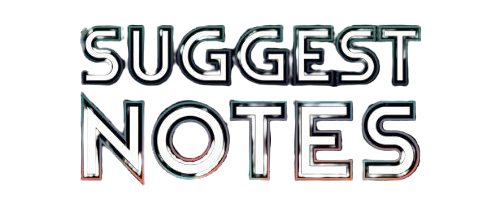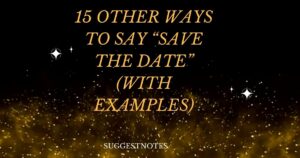When writing, using clear transitions is key. Phrases like “Firstly Secondly Thirdly” help organize thoughts and guide readers. They make it easier to follow your ideas and understand the flow of your argument.
Using “Firstly Secondly Thirdly” ensures that each point stands out. This simple structure keeps your writing engaging and coherent.
Incorporating “Firstly Secondly Thirdly” can elevate your communication. It signals to the reader what to expect next. Instead of losing their attention, they stay focused on your message.
Using these phrases helps break down complex ideas into manageable parts. Overall, “Firstly Secondly Thirdly” is an effective tool for any writer looking to enhance clarity and engagement.
What To Say Instead of “Firstly Secondly Thirdly”

- First, Next, Then
- To Begin With, Furthermore, In Addition
- Initially, Subsequently, Finally
- In the First Place, In the Second Place, In the Third Place
- First of All, After That, Lastly
- Primarily, Secondly, Lastly
- First and Foremost, Afterward, Concurrently
- Beginning With, Following That, Lastly
- As a Start, Continuing With, Concluding With
- The First Point Is, The Second Point Is, The Third Point Is
- First off, Following that, In conclusion
- For starters, Then again, To wrap up
- In the beginning, Later on, Ultimately
- To start with, Subsequently, In summary
- At the outset, In the next phase, Finally
1. First, Next, Then
These phrases are great for sequencing events or ideas. They clearly indicate the order in which things happen, making it easier for the reader to follow along.
Example:
- Firstly, I made breakfast. This step is essential to kickstart my day.
- Next, I cleaned the kitchen to keep my space tidy.
- Then, I started my work, feeling ready and energized.
Using these transitions, you can show a clear progression in your actions or thoughts.
2. To Begin With, Furthermore, In Addition
This set of phrases is effective for introducing ideas and adding information. They can help you build your argument or narrative in a structured way.
Example:
- To begin with, I love hiking because it allows me to connect with nature.
- Furthermore, I enjoy camping, which gives me a chance to escape from daily routines.
- In addition, I like to explore new trails, which adds excitement to my adventures.
These phrases enable you to expand on your initial point and provide additional context or details.
3. Initially, Subsequently, Finally
This sequence is useful for demonstrating how one action leads to another. It emphasizes the progression of ideas over time.
Example:
- Initially, I was nervous about the presentation. This feeling is common for many people.
- Subsequently, I practiced every day, which helped build my confidence.
- Finally, I delivered it successfully, receiving positive feedback from my peers.
These transitions illustrate a clear timeline, helping the reader see how you reached a particular outcome.
4. In the First Place, In the Second Place, In the Third Place
This set provides a structured approach to presenting your points. It emphasizes the importance of each idea and allows for clear categorization.
Example:
- In the first place, exercise improves health by boosting the immune system.
- In the second place, it enhances mood through the release of endorphins.
- In the third place, it helps with sleep, ensuring a more restful night.
These phrases guide the reader through your argument systematically, reinforcing the significance of each point.
5. First of All, After That, Lastly
This structure helps in presenting steps or ideas in a logical order. It provides a clear framework for readers to follow.
Example:
- First of all, I want to thank everyone for being here today. Your support means a lot.
- After that, I will share my plans for the upcoming project, outlining our goals and objectives.
- Lastly, I will open the floor for questions, encouraging discussion and feedback.
Using this sequence keeps your presentation organized and ensures that key points are clearly articulated.
6. Primarily, Secondly, Lastly
These terms help organize your key ideas effectively. They signal the relative importance of each point, making it easier for readers to grasp the main concepts.
Example:
- Primarily, we need to focus on our goals to achieve success. Clear objectives are crucial.
- Secondly, we should track our progress regularly to identify areas for improvement.
- Lastly, we must adjust our strategies as needed to remain flexible and responsive to challenges.
This approach helps maintain a clear line of reasoning while emphasizing the importance of each point.
7. First and Foremost, Afterward, Concurrently
This set of phrases establishes priorities and highlights the importance of each step in your reasoning.
Example:
- First and foremost, we must ensure safety in our workplace. It’s our top priority.
- Afterward, we can think about efficiency, optimizing our processes for better results.
- Concurrently, we can engage with the community, building relationships that support our mission.
Using this sequence helps clarify your priorities and ensures your message is impactful.
8. Beginning With, Following That, Lastly
This structure creates a logical flow, guiding the reader through your ideas from start to finish.
Example:
- Beginning with the basics is essential for anyone new to the topic. Establishing a foundation is key.
- Following that, we can explore advanced topics, diving deeper into the subject matter.
- Lastly, we will review everything we’ve learned to reinforce our understanding.
This methodical approach enhances clarity and keeps the reader engaged throughout the discussion.
9. As a Start, Continuing With, Concluding With
This sequence provides a clear introduction, development, and conclusion. It helps frame your ideas effectively.
Example:
- As a start, let’s review our objectives to ensure everyone is aligned.
- Continuing with, we will discuss methods that can help us achieve these objectives.
- Concluding with, we’ll summarize our findings, highlighting the key takeaways from our discussion.
Using this framework creates a cohesive narrative that is easy for readers to follow.
10. The First Point Is, The Second Point Is, The Third Point Is
This format is particularly useful for presentations or structured reports. It clearly outlines your key arguments.
Example:
- The first point is the importance of time management. Proper planning can lead to better outcomes.
- The second point is prioritizing tasks to focus on what truly matters.
- The third point is maintaining a work-life balance, which is crucial for overall well-being.
This method clearly presents your ideas, allowing readers to easily identify and understand each point.
11. First off, Following that, In conclusion
This set provides a straightforward way to introduce points, develop them, and wrap things up clearly.
Example:
- First off, I want to express my gratitude to everyone who participated in the survey. Your input is invaluable.
- Following that, I will analyze the survey results and discuss their implications for our project.
- In conclusion, we’ll outline the next steps based on these findings to guide our future efforts.
This sequence helps maintain clarity throughout your discussion and ensures a strong finish.
12. For starters, Then again, To wrap up

This structure helps to initiate discussions, provide additional insights, and conclude effectively.
Example:
- For starters, let’s identify the main challenges we face in this project. Addressing these is critical.
- Then again, we should consider the resources we have at our disposal, which can influence our approach.
- To wrap up, we’ll review our key takeaways and outline our action plan moving forward.
Using these transitions keeps the conversation focused and makes the conclusions impactful.
Related Guide:
15 Other Ways to Say “Mark Your Calendars” (With Examples)
13. In the beginning, Later on, Ultimately
This sequence emphasizes the progression of ideas over time and the final outcome.
Example:
- In the beginning, we set ambitious goals to drive our initiatives. Starting strong is crucial.
- Later on, we faced unexpected challenges that required adjustments to our plans.
- Ultimately, our flexibility allowed us to achieve most of our objectives, showcasing our resilience.
This format helps the reader follow your journey from the start to the conclusion.
14. To start with, Subsequently, In summary
This structure helps introduce topics, show development, and provide a final overview.
Example:
- To start with, it’s important to understand the fundamentals of digital marketing. A solid foundation is key.
- Subsequently, we will delve into various strategies that can enhance our online presence.
- In summary, we will recap the main points discussed and highlight actionable steps we can take.
These transitions create a cohesive narrative and ensure that readers can easily grasp your overall message.
15. At the outset, In the next phase, Finally

This set provides a clear introduction, development, and conclusion, making the content easy to follow.
Example:
- At the outset, we identified our target audience, which is critical for effective marketing.
- In the next phase, we’ll design campaigns tailored to their needs and preferences.
- Finally, we’ll assess the results and make necessary adjustments for future campaigns.
This organization allows for a clear progression of ideas and keeps the reader engaged throughout.
FAQ’s
What do “Firstly Secondly Thirdly” signify in writing?
“Firstly Secondly Thirdly” are transition phrases that help organize ideas in a clear sequence. Using these terms guides readers through your points effectively.
How can I use “Firstly Secondly Thirdly” in my writing?
You can use “Firstly Secondly Thirdly” to introduce your main points or arguments. This structured approach helps create a logical flow, making your content easier to follow.
Are there alternatives to “Firstly Secondly Thirdly”?
Yes, phrases like “First off,” “Next,” and “Finally” can be used similarly to “Firstly Secondly Thirdly.” However, using the original terms maintains clarity and consistency in your writing.
Why is it important to use “Firstly Secondly Thirdly”?
Using “Firstly Secondly, Thirdly” adds structure to your writing, making it more readable. These phrases help emphasize the order and significance of your points.
Can “Firstly Secondly Thirdly” improve my writing style?
Absolutely! Incorporating “Firstly Secondly Thirdly” enhances the coherence of your writing. It shows the reader that you have a thoughtful and organized approach to your ideas.
Conclusion
In conclusion, using transition phrases like “Firstly Secondly Thirdly” is essential for creating clear and engaging writing. These phrases help structure your ideas logically, guiding readers through your arguments or narratives. By incorporating “Firstly Secondly Thirdly,” you can effectively highlight the order of your points, making your content easier to understand and follow.
Ultimately, the repetition of “Firstly Secondly Thirdly” not only emphasizes the importance of each point but also enhances the flow of your writing. As you craft your messages, remember to utilize these transitions to strengthen your structure. By doing so, you’ll ensure that your readers stay engaged and grasp your main ideas with clarity and confidence.

As a content writer with five years of experience, I focus on creating insightful and impactful website content that drives engagement and boosts search visibility. With a strong foundation in SEO and digital marketing, I excel at crafting compelling narratives that resonate with audiences and enhance brand storytelling. My passion for data-driven content creation allows me to deliver pieces that not only inform but also inspire action. Whether through blog posts, web copy, or informative articles, I strive to empower businesses to connect authentically with their customers.







